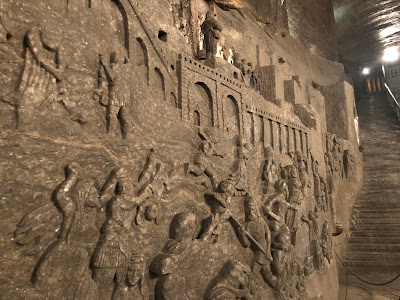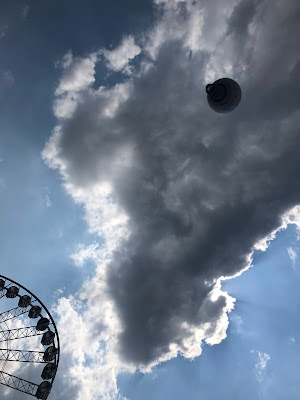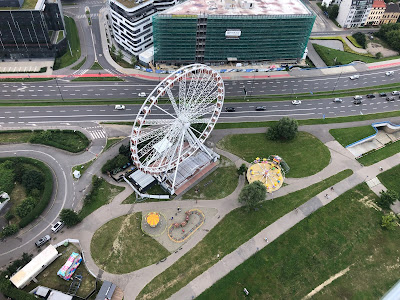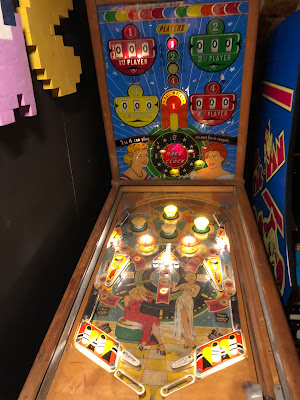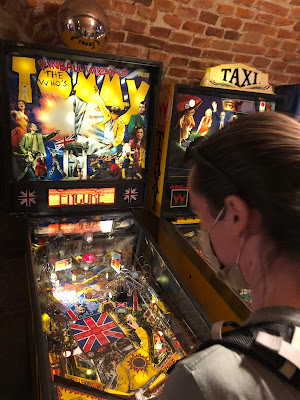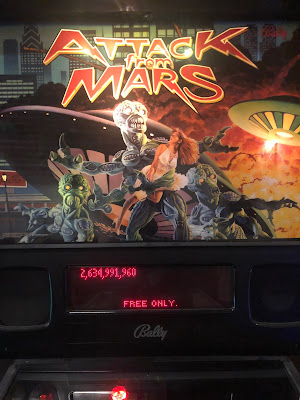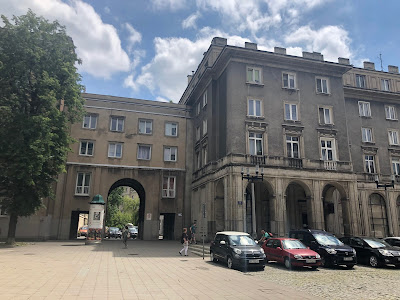I'm back in the US, which means that Aackle is no longer in Krakow. This will likely be my last post to this blog, however a new van life-related journal should pop up in the next few weeks. In the mean time, I will be living with my parents in New Mexico for a few weeks, then attending my sister's wedding in Colorado, plus a few personal trips around the state, before settling in Utah for the winter. My primary focus now though, is reacquainting myself to what it is like to live in America.
Upon arrival in Atlanta, the American flag was on prominent display. The only "decoration" on the walls in the customs room were two artistic metal American flags. The image was reinforced in the El Paso airport, where a flag approximately 20 feet long hung from the ceiling in the main entrance way. What else do Americans love? Well, guns of course! Based on the TSA notices, guns are allowed in the airport until you reach the TSA check point...oh dear.
American is also just big. Big servings, big drinks, big people, big cars. Good thing the gas is cheap, since you have to drive everywhere. I did attempt to walk into Mesilla's small downtown the other evening, looking for ice cream, of course, and there was nothing open. How can a desert town not be serving ice cream at 7pm?! And why are ice cream shops not more common to begin with?
I know I sound like a complainer, but I really did just love Krakow. But there are some very nice things here, too. I do like getting free water at restaurants (although I have to request "no ice" and sparkling water isn't an option), and I went to a pool to swim laps for only $2 yesterday. Plus, it's an added bonus that Las Cruces is the most beautiful I have ever seen it; there is more greenery and bright flowers out right now than any August I can remember.
There have been some funny things, too. Cameron called me when at the gas station and was in a a tizzy because he couldn't figure out how to pay. He had attempted to pump the gas before making the payment so the pump locked up on him (in Poland you pump first, and then go inside to pay). When he did figure it out, not being able to do contactless payment through him for another spin. To be fair, I was also a bit in my head about paying at the grocery store; I was so used to my Polish store routine that I was certain I would be stuck in my habits (tak, to wszyko; nie, dziękuję; do widzenia) that I would embarrass myself at the register. I managed the payment just fine, but started to spazz when the cashier started to bag my groceries in a plastic bag.
There's one thing about America that I'm now remembering, and I'm a bit baffled by—Americans. On my first day back I was at the DMV, and immediately after getting in line the young man in front of me started babbling. He got a ticket and was unsure if he liked the insurance company he just chose and he really liked living in Mexico for a few years and he brought a friend along who was waiting outside and...that's a lot of information to learn about a stranger in three minutes.
Americans also seem overly loud and aggressively friendly. I've heard an enthusiastic "thank you so very much, I really appreciate it!" a few times already. It seems more of an affect than a genuine appreciation. I think in my two years in Europe I learned to tone down my voice and to appreciate the reserved directness of many Polish people.
Overall, I miss Poland, but I am happy to be here for now. Thank you for reading my blog the last two years, and I hope you'll join me from the Printer from the Sprinter (working title, suggestions welcome).









